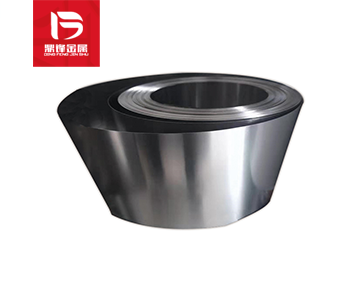
Tantalum Ingot Recycling
Tantalum sheets, ingots, wires and rods have distinctly different applications, mainly due to the different shapes and processing methods. Scrap tantalum sheets are one of the recycling sources of tantalum waste. Tantalum waste recycling also includes tantalum foil recycling, tantalum pellet recycling, tantalum wire recycling, tantalum tube recycling, tantalum rod recycling, tantalum alloy recycling, tantalum capacitor recycling, etc.
- Parameter
- Related Questions and Answers
-
Name : Tantalum Ingot
-
Use : It is mainly used in manufacturing capacitors, resistors, electronic components, high temperature resistant components, reactor linings, etc.
-
Application Areas : Aerospace, electronics industry, chemical industry, etc.
-
Appearance and properties : Block, slice, wire
-
Settlement Method : On-site payment
-
Recycling Type :Tantalum recycling
-
Door-to-door recycling:worldwide
-
Customer service: Free content testing and door-to-door recycling
Tantalum Slag Recycling
Tantalum slag refers to the tantalum-containing solid waste or by-products produced during the tantalum smelting and refining process, which is produced when impurities are mixed in after tantalum ore is smelted or chemically treated at high temperatures. Tantalum slag usually contains small amounts of tantalum metal and its compounds (tantalum oxide, tantalates, etc.), as well as impurity metals and other elements. Tantalum slag is usually highly stable due to its corrosion resistance and high melting point. In some cases, the tantalum metal in tantalum slag can be recovered and refined by further smelting or chemical processing. Tantalum slag is one of the sources of tantalum-containing waste recycling. Tantalum-containing waste recycling also includes tantalum capacitor recycling, tantalum wire recycling, tantalum sheet recycling, tantalum block recycling, tantalum alloy recycling, tantalum rod recycling, tantalum tube recycling, tantalum pellet recycling, etc.
Search : Tantalum Slag RecyclingTantalum Powder Recycling
Tantalum powder is a fine granular material made of tantalum metal by chemical reduction or mechanical processing, usually with high purity and fine particle size. Tantalum powder has excellent corrosion resistance, high temperature resistance and good electrical conductivity, so it is widely used in electronics, aerospace, chemical processing and other fields. Tantalum powder is often used to manufacture electronic components, such as capacitors, semiconductor components, etc., and is also used to produce tantalum alloys, tantalum targets, injection devices and high-temperature structural materials.
Search : Tantalum Powder RecyclingTantalum Nitride Recycling
Tantalum nitride (TaN) is a compound consisting of tantalum and nitrogen, which usually appears as a black or gray solid. It has very high hardness, good electrical conductivity, high temperature resistance, and excellent chemical stability, and performs well especially in high temperature and strong corrosive environments. Tantalum nitride is widely used in coatings and thin film materials, especially as wear-resistant coatings in the manufacture of high-performance tools, machine parts, and cutting tools. In addition, tantalum nitride also has important applications in the semiconductor industry, where it is used as a material for metal interconnects, with excellent electrical conductivity and stability. Due to its high hardness and corrosion resistance, tantalum nitride is also used in fields such as electronics, optics, and energy equipment, making it an important material in many high-precision and demanding technologies.
Search : Tantalum Nitride RecyclingTantalum Oxide Recycling
Tantalum oxide (Ta₂O₅) is a common tantalum compound that usually appears as a white or colorless solid. It is widely used in electronics, materials science, and chemical industries due to its extremely high chemical stability, heat resistance, and electrical insulation. Tantalum oxide has excellent dielectric properties and is often used to manufacture high-performance capacitors, especially in electronic devices that require miniaturization and high voltage. Tantalum oxide is also used as a catalyst, coating material, and high-temperature ceramic material, and is widely used in aerospace, semiconductor industry, electrical equipment, and other fields. Tantalum oxide is also often used in chemical equipment and corrosion-resistant materials due to its excellent corrosion resistance.
Search : Tantalum Oxide RecyclingProduct Details
Tantalum sheets, ingots, wires and rods have distinctly different applications, mainly due to the different shapes and processing methods. Tantalum sheets are usually used to make electronic components, chemical containers, high-temperature resistant components and reactor linings, due to their excellent corrosion resistance and high-temperature stability. Tantalum ingots are the original smelted form of tantalum, and are mainly processed into tantalum sheets, tantalum wires, etc., which are widely used in the aerospace, electronics and chemical industries. Tantalum wires are mainly used to make capacitors, resistors and electronic components due to their elongated shape, and play an important role in medical devices (such as implants) due to their excellent biocompatibility. Tantalum rods are generally used to make mechanical parts and corrosion-resistant structural materials, and are widely used in high-temperature and high-pressure environments, such as petrochemical, aerospace and other industries. Tantalum sheets, tantalum ingots, tantalum wires and tantalum rods play important roles in their respective fields, due to their different shapes and applications.
Scrap tantalum sheets are one of the recycling sources of tantalum waste. Tantalum waste recycling also includes tantalum foil recycling, tantalum pellet recycling, tantalum wire recycling, tantalum tube recycling, tantalum rod recycling, tantalum alloy recycling, tantalum capacitor recycling, etc. If you need to recycle tantalum-containing scrap, please call our 24-hour service hotline. Dingfeng Precious Metals Recycling and Refining Factory has its own recycling and refining plant that does not need a middleman to earn the price difference. We also have a professional technical team and customer service personnel to ensure customer privacy during the recycling process.

